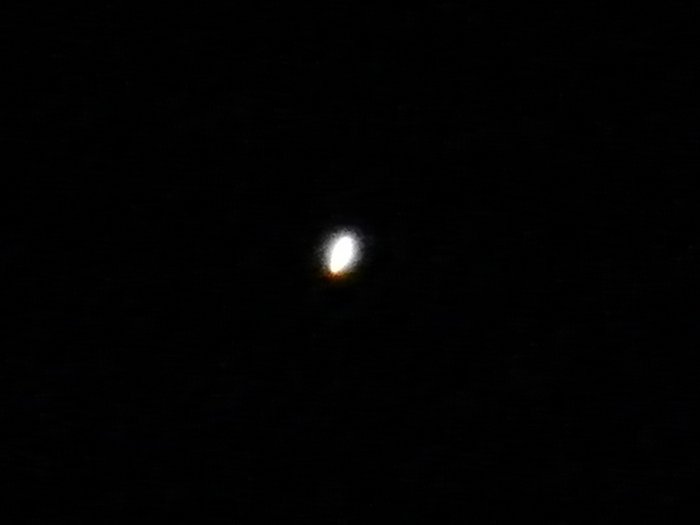¡Buen día y muy feliz martes preciada audiencia! El día de hoy vengo a compartir con ustedes las fotos de cómo se ven Júpiter y Saturno a través de mi cámara. 😄
Como mencioné en mi publicación de fotografías de la luna, el aumento óptico que tiene mi cámara me permite utilizarla como una especie de telescopio (aunque con mucho menos aumento del que tendría uno de verdad y sin la posibilidad de poder apreciar los colores y detalles de estos colosos de nuestro sistema solar).
Good day and a very happy Tuesday dear audience! Today I come to share with you the pictures of how Jupiter and Saturn look through my camera. 😄
As I mentioned in my publication of photographs of the moon, the optical magnification that my camera has allows me to use it as a kind of telescope (although with much less magnification than a real one would have and without the possibility of being able to appreciate the colors and details of these giants of our solar system).

Con la primera fotografía que tomé de Júpiter, me sorprendió el hecho de que podían apreciarse con claridad sus cuatro lunas galileanas que por orden de cercanía a este gigante gaseoso serían: Ío, Europa, Ganímedes y Calisto. También es notorio el movimiento de traslación de estos satélites al rededor de Júpiter a lo largo del tiempo en las fotografías que capturé.
Con el caso de Saturno, lamentablemente el aumento no es tan potente para poder apreciar sus anillos, sin embargo, se nota en la foto que no es un cuerpo celeste esférico como Júpiter debido a luz reflejada por sus anillos, los cuales hacen que parezca un óvalo en la imagen.
With the first photograph I took of Jupiter, I was surprised by the fact that its four Galilean moons could be clearly seen, which in order of proximity to this gas giant would be: Io, Europa, Ganymede and Callisto. The translation movement of these satellites around Jupiter over time is also noticeable in the photographs I captured.
With the case of Saturn, unfortunately the magnification is not so powerful to be able to appreciate its rings, however, it is noted in the photo that it is not a spherical celestial body like Jupiter due to the light reflected by its rings, which make it look like an oval in the image.
Ahora sí, ¡vamos con las fotos!:
Now, let's go with the pictures!
Jupiter: 05/aug/2020
Jupiter: 15/aug/2020
Jupiter: 23/aug/2020
Jupiter: 28/aug/2020
Saturn: 15/aug/2020
Jupiter and Saturn: 15/aug/2020

Espero que haya sido de su agrado este post, ¡hasta la próxima! 😄
I hope you liked this post, until next time! 😄
Todas las imágenes utilizadas en esta publicación son de mi autoría utilizando una cámara Olympus SP-800UZ. / All the pictures used in this post are made by me using an Olympus SP-800UZ camera.
Texto traducido con la ayuda del traductor DeepL (versión gratuita). / Text translated with the help of the DeepL translator (free version).
Congratulations @epilatero! You have completed the following achievement on the Hive blockchain and have been rewarded with new badge(s) :
<table><tr><td><img src="https://images.hive.blog/60x70/http://hivebuzz.me/@epilatero/upvoted.png?202011240111" /><td>You received more than 1750 upvotes. Your next target is to reach 2000 upvotes. <p dir="auto"><sub><em>You can view your badges on <a href="https://hivebuzz.me/@epilatero" target="_blank" rel="noreferrer noopener" title="This link will take you away from hive.blog" class="external_link">your board and compare yourself to others in the <a href="https://hivebuzz.me/ranking" target="_blank" rel="noreferrer noopener" title="This link will take you away from hive.blog" class="external_link">Ranking<br /> <sub><em>If you no longer want to receive notifications, reply to this comment with the word <code>STOPThank you very much @hivebuzz, have a nice day! 😄😄